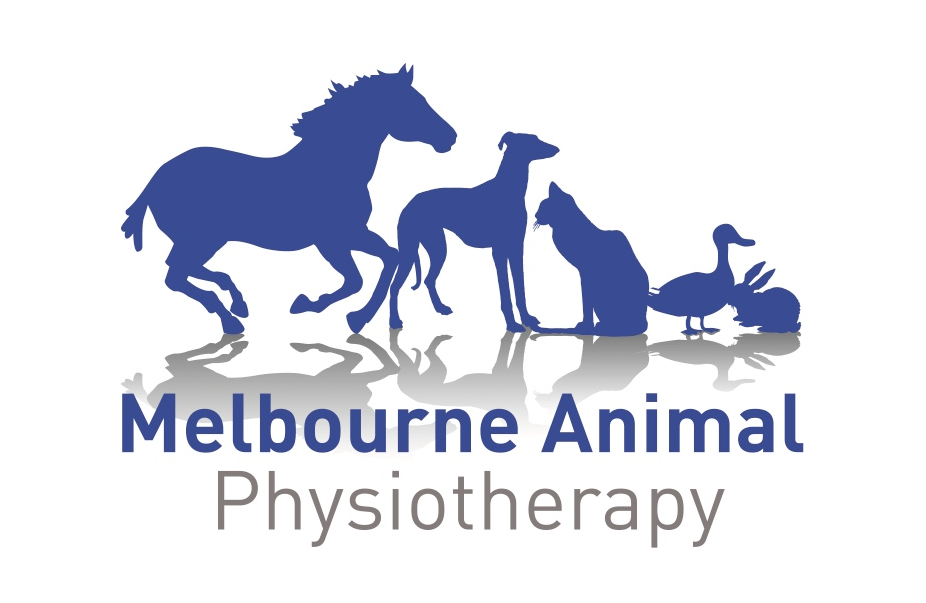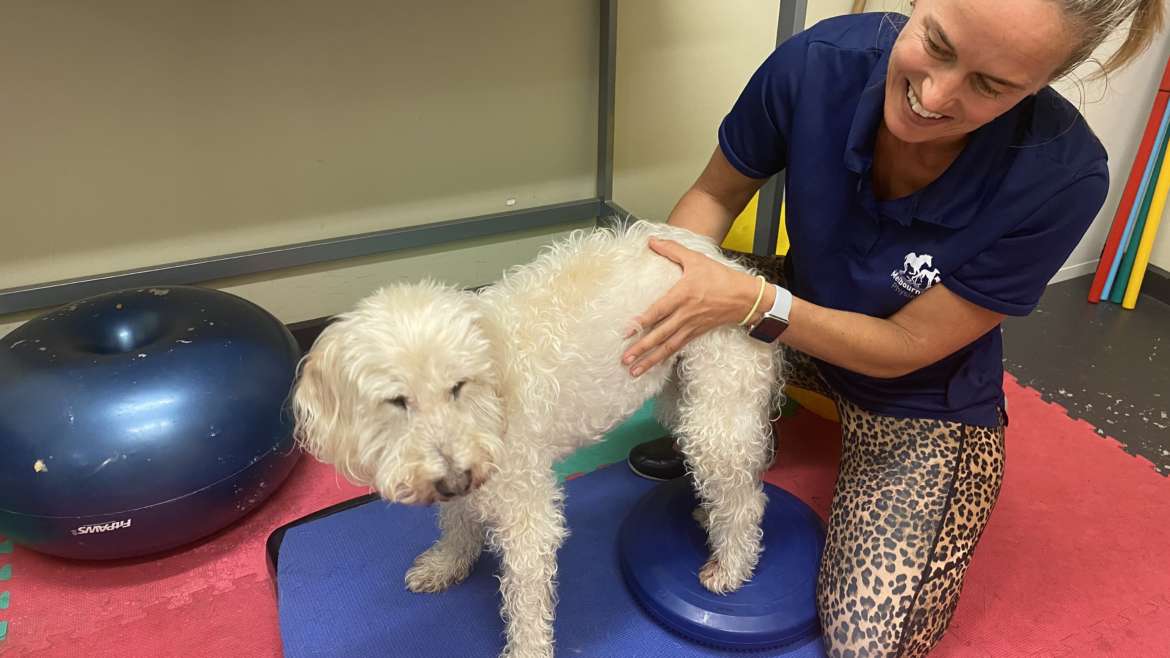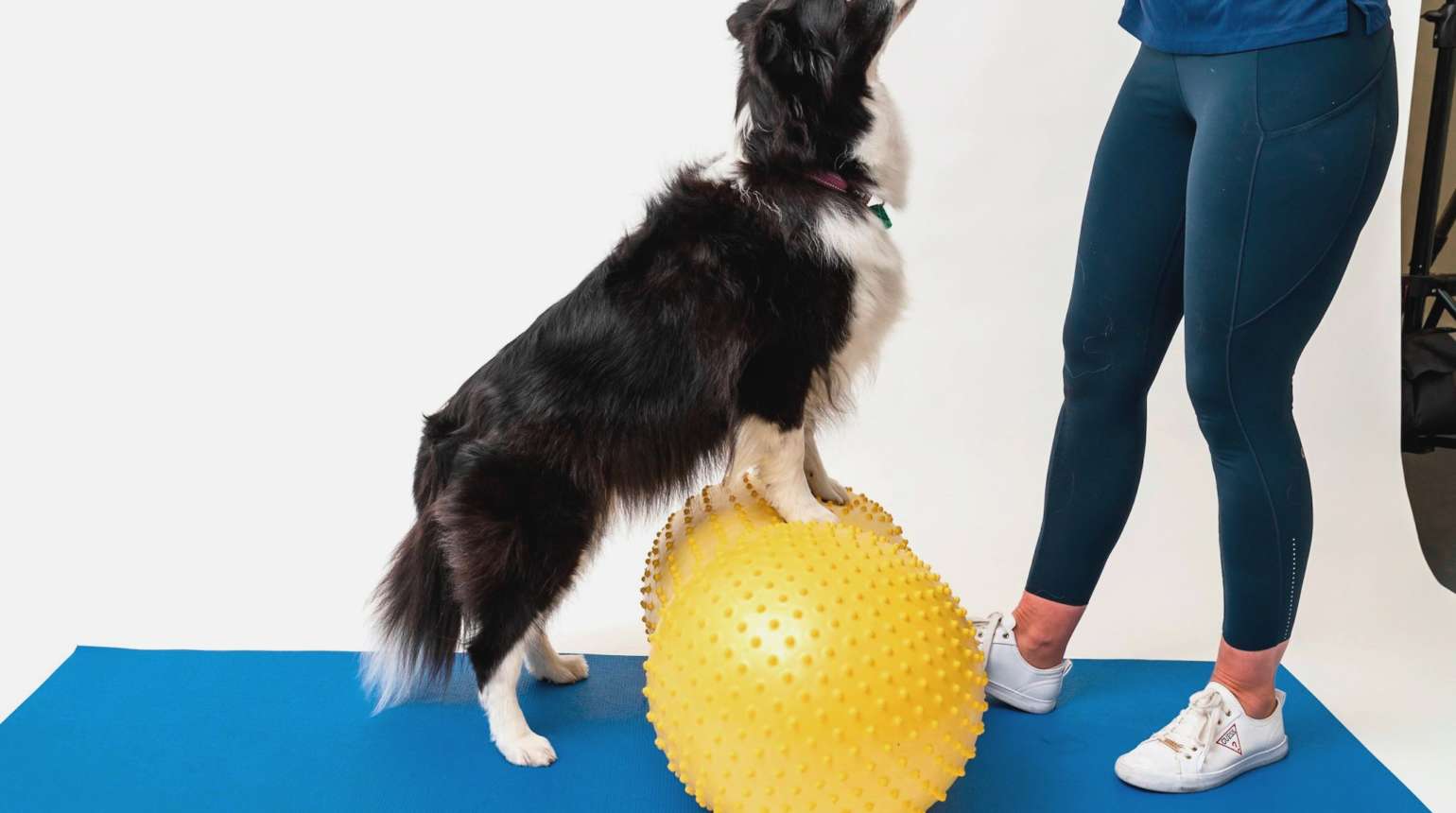Of all the conditions we see at Melbourne Animal Physiotherapy, the most common orthopedic condition would be CCL rupture or cranial cruciate ligament rupture. This is commonly understood as ACL, or Anterior cruciate ligament rupture, in humans, but due to the terminology of the dog, it is called CCL. The most common presentation of CCL rupture is after a quick direction change or big leap, resulting in extreme force being placed through the stifle joint in the hind leg, much like an AFL football player who leaps for a mark and twists on their landing leg. Often, the dog will immediately begin limping, may wince in pain, and there will be obvious swelling in the proceeding few hours and days. This is what is called an acute rupture, which may accompany meniscal (cartilage) damage also. It may be a partial or complete rupture, which is usually diagnosed via veterinary physical investigation and scans involving XRAYs and MRI. In some circumstances, the dog may present with a long history of lameness, which is gradually worsening, often with old age. This may be a partial rupture which has occurred a while ago, and either gradually progressed, or resulted in some further joint deterioration or arthritis as a result of the instability in the joint.
The main role of the CCL is joint stability in the rotation of the femur on the tibia. When this stability is compromised, there is increased movement of the surfaces at the stifle joint. We are commonly asked whether we can manage a CCL rupture with conservative therapy rather than surgery. As with human ACL injuries, there are many factors to consider and every case is different. This includes how active the dog is, the age of the dog, the level of joint stability, the weight of the dog, the level of disability, and the deterioration in the joint on scans. Some cases will be able to be managed with NSAIDs (anti-inflammatories), or Corticosteroids, cage rest, or restriction of movement, and physiotherapy. Others will require surgery to correct the instability, for which there are a variety of different surgeries available based on the size and activity levels of your dog. It is important to have an assessment with your veterinarian if a CCL rupture is suspected. You don’t require a vet referral to see an animal physiotherapist, but a working diagnosis is preferred where possible to help with providing the best management for the dog.
Physiotherapy for CCL rupture involves providing a thorough assessment of the dog’s daily life and exercise needs/goals. We will assess the level of dysfunction, determine tight muscles and structures, and measure muscle strength and atrophy. We can then provide hands-on treatment such as massage, mobilization, and stretching, as well as dry needling to relieve pain. We will provide an appropriate level of home exercise based on the dog’s ability, and teach you how to perform this at home, as well as advice on restrictions to avoid placing additional stress on the stifle joint.
Our advice is always to prevent rather than cure whenever possible. The best way to prevent a CCL injury in your companion is to keep to a regular exercise regime, involving consistent leash walks ideally 2-3 times a day ranging 20-40min, preferably involving hills a few days a week to improve hindlimb muscle strength. Avoid throwing balls and frisbees, unless your dog is swimming for them, as this is an unnatural force to place on your dog’s legs, and although it’s an easy way to burn the energy in your dog, it’s not worth the risk of injuring their ligaments. Keep your dog to ideal body weight, with a healthy diet, preferably with a high-quality kibble and possibly the use of supplemental joint support. A regular physiotherapy session can also help to alleviate extra muscle tightness and pick up any mild dysfunctions and muscle atrophy before they become a concern.




1 Comment
chcplay login
Very interesting information